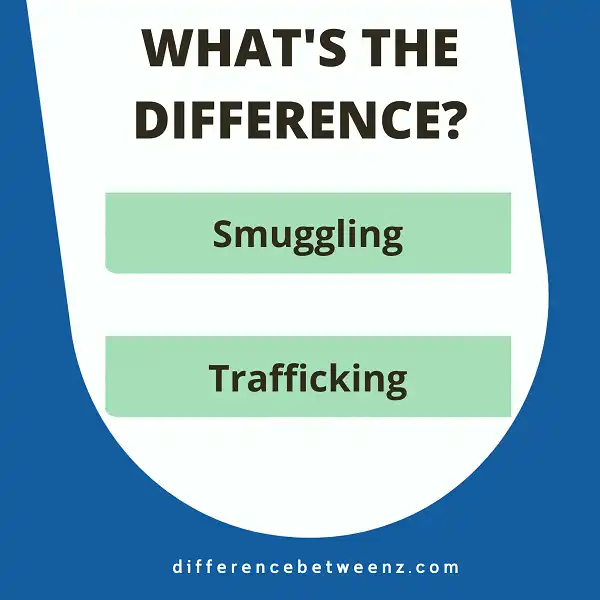Illegal smuggling and trafficking are often thought of as being the same thing, but they are actually quite different. Trafficking is a more serious crime, and it involves using someone for profit or exploiting them in some way. Smuggling is simply the act of illegally transporting something across a border. It can be people, drugs, or weapons, but it doesn’t always involve exploitation. Here we will take a closer look at the difference between smuggling and trafficking so that you can better understand what each one entails.
What is Smuggling?
Smuggling is the illegal transport of goods or people across national borders. Smugglers typically use hidden compartments or false documentation to conceal their contraband from customs officials. Goods that are commonly smuggled include drugs, weapons, and wildlife. People who smuggle drugs are called drug traffickers or drug dealers. Those who smuggle weapons are called gunrunners. People who smuggle humans are called human traffickers. Smuggling is a global problem that affects all countries. Some estimates suggest that as much as $500 billion worth of goods are smuggled each year.
This illicit trade has negative consequences for economies, security, and public health. Smugglers often evade customs duties, which results in lost revenue for governments. Smuggling also fuels crime and violence by providing illegal weapons and narcotics to criminals. In addition, smuggled goods may be counterfeit or dangerous, posing a risk to consumers. To combat smuggling, governments have implemented a variety of measures, such as tightening border security and increased penalties for smugglers. Despite these efforts, smuggling remains a significant challenge.
What is Trafficking?
Trafficking is the illegal trade of people for the purposes of forced labor, sexual slavery, or commercial exploitation. Traffickers use force, fraud, or coercion to lure their victims and force them into labor or sexual servitude. Trafficking is a global problem that affects people of all ages and can happen anywhere in the world. Although most trafficking victims are women and girls, men and boys are also trafficked. Traffickers often prey on vulnerable people who are seeking a better life or escaping poverty or conflict. They may promise their victims a good job, housing, or education, but instead, force them into slave labor or the sex trade. Victims of trafficking often suffer from physical and psychological abuse, and they may not be able to leave their situation on their own. If you suspect that someone may be a victim of trafficking, it is important to get help. Trafficking is a serious crime and should be reported to the authorities.
Difference between Smuggling and Trafficking
Smuggling and trafficking are often used interchangeably, but there is a big distinction between the two. Smuggling is defined as the illegal transport of goods or people across borders. Trafficking, on the other hand, is a form of smuggling that involves the use of force, fraud, or coercion in order to exploit victims for labor or commercial sex. In other words, trafficking is a type of crime that specifically targets vulnerable individuals for exploitation. Unfortunately, trafficking is a very lucrative business for criminal organizations, and it affects millions of people around the world. While smuggling is certainly a serious crime, it does not typically involve the same level of exploitation and victimization as trafficking. As a result, trafficking is considered to be a much more serious offense.
Conclusion
The line between smuggling and trafficking is blurry, but it is important to understand the difference. Smuggling is a crime of concealment, while trafficking is a crime of exploitation. Trafficking victims are often subjected to violence, abuse, and extortion. If you suspect someone is being trafficked, please report it to authorities.


